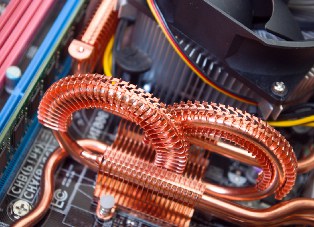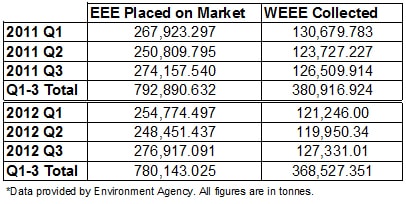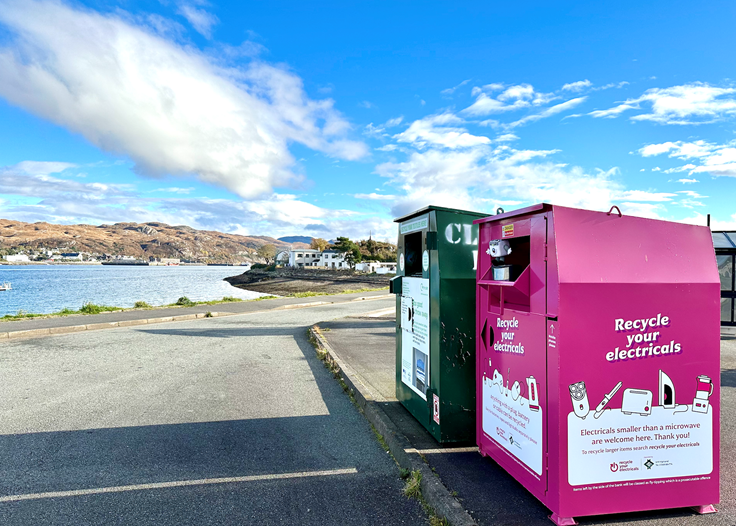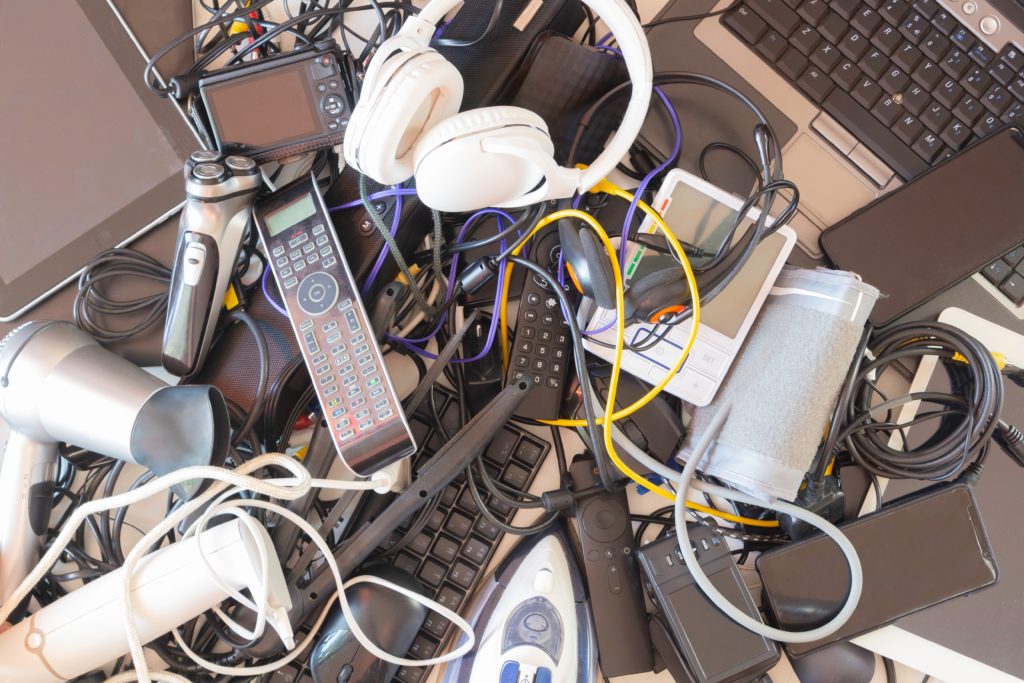The household WEEE recycling rate for the first three quarters of 2012 has dipped slightly when compared to the same period in 2011, data published by the Environment Agency has shown. And, they indicate that the UK is still significantly short of meeting a 45% recycling rate required in 2016.
The data, sent out to producer compliance schemes last month, shows that the tonnage of waste electrical and electronic equipment (WEEE) collected between January and September 2012 fell to 368,527 tonnes, compared to 380,915 tonnes for the same period in 2011.

This means that the UKs collection rate for household WEEE equalled 47.2% between January and September 2012, compared to around 48% for the same nine months in 2011.
The amount of business-to-business WEEE collected throughout the first nine months of 2012 also fell in comparison to the same period in 2011. A total of 103,705 tonnes was collected, down from 108,101 tonnes in 2011.
Currently it is not possible to calculate the UKs overall WEEE collection rate for the first nine months of 2012. The collection rates are calculated proportionately by linking to the amount of new electronic and electrical equipment (EEE) placed on the market.
Figures are available for the amount of new household equipment placed on the market for the first nine months of 2012 but the figures for business WEEE are not yet in and are expected in March this year.
But, as the tonnages collected in January to September 2012 remain broadly similar to the same period in 2011, during which time the UK achieved a 38% collection rate, the UK still appears to be short of the 45% target set out under the WEEE Recast, set to come into effect from 2016.
Collections
The figures come despite collections in the third quarter of 2012 reaching an annual high, rising from 121,246 tonnes between January and March and 119,950 tonnes collected between April and June to 127,331 tonnes for the third quarter of the year.
But, the total amount of new equipment entering the market has also fallen, from more than 790,000 tonnes between January and September in 2011, compared to just over 780,000 tonnes for the same period in 2012.
This extends a trend that has occurred over the last four years, thought to have been caused in part by falling consumption resulting from global financial problems as well as manufacturers opting to replace older products with lighter-weight equivalents.

The data also suggests that the anticipated surge in the amount of display equipment such as televisions and monitors caused by the switchover from an analogue to a digital television signal has passed, with around 103,705 tonnes being collected in quarter three 2012, compared to 108,101 for the corresponding period in 2011.
But, collections in the small household appliances category, which includes items such as vacuum cleaners, irons, and toasters – seen to be among the key groups in which an upturn in collection rates will be needed for the Recast targets to be met – has risen, up to 25,291 tonnes collected between January and September 2012 from 24,223 tonnes for the same period in 2011.
Response
Commenting on the figures, Justin Greenaway, contracts manager at Kent-based WEEE reprocessor SWEEEP Kuusakoski, said that the data implies that the system is currently collecting at near to full capacity, and claimed that uncertainty over the future of compliance could prevent further improvements.
He said: The most recent 2012 tonnage data confirms that the country is at best stagnating its way towards the 2016 compulsory put-on-market recycling target. Not increasing our recycling rate should be of concern to everyone as this implies the collection system is collecting all it can.
The only way to genuinely increase this recycling percentage is to tell more people about WEEE as a waste stream and make it more convenient for them to recycle this is not free. Compliance Schemes and the waste industry need stability to justify this investment but instead we face uncertainty over how the UK WEEE system will be funded.
Related Links
I predict that the quarter four recycling rate will dip even further. It is important for everyone to realise that we are only achieving these recycling rates because of the present funding system that promotes additional WEEE collection ideas. Potentially taking away that funding certainty during the recast may well threaten our ability to even maintain our present collection rates never mind getting to 65%.
The full data can be obtained by contacting weee@environment-agency.co.uk.
Proposed changes to the WEEE system are set to be discussed at a one-day conference in London on May 1 2013 hosted by letsrecycle.com, entitled Reshaping the WEEE Regulations. To find out more, click here.










Subscribe for free